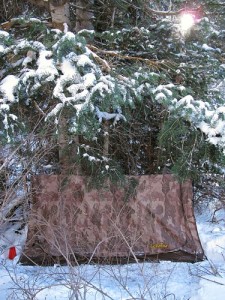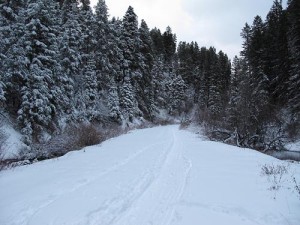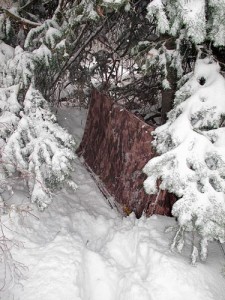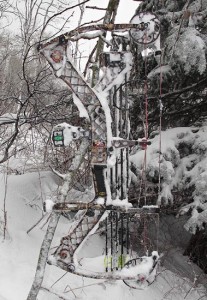The following is a guest blog by Daniel Chabert
SURVIVAL HUNTING TECHNIQUES
Survival hunting techniques are techniques needed to get your game in the wild during an emergency, disaster or critical condition when you are not equipped with ready-made gears such as gun, arrow, and nets. Many circumstances could warrant one being separated from civilization and assistance irrespective of how cautious you are, but sometimes it could come naturally.
If you will like to endure the harsh conditions of survival circumstance, proteins and animal fats must be eaten frequently. This makes survival hunting an important skill. A survival situation is an energy sapping experience due to potentially harsh weather which makes use of increased calories to produce enough heat to stay warm and perform the physical tasks needed to survive.
Energy from the wild animals obtained through hunting is essential to augment the increased metabolized calories in the body for survival. Such conditions are a drain on a person’s energy. Potentially inclement weather forces your body to metabolize calories at an increased rate to stay warm, and performing the physical tasks required to take care of your body consumes lots of energy. The concentrated calories from wild edible animals obtained through survival hunting are an efficient way to keep the internal fire burning.
ANIMALS TO TARGET
In surviving in the wild, it is better to go for small game such as the rodents, reptiles, birds, fish, amphibians rather than the large game such as the ungulates. Small animals occur more in the wild and are easily accessible compared to their larger counterparts on a given part of the land. In general, small game animals are active when they are in need of food and are searching for food, mostly in the morning and evening. They are predictable in their movement as they usually follow maze or a pathway leading to their food source. They are very cautious about being seen by predators, as such they move in an area of dense vegetation and cover.

Invertebrates such as crickets, locusts, bugs and other insects can also be a good survival meal. Mollusks (clams and snails) can also be considered. Invertebrates are nutritious and easy to catch—you can pick them from their hole, on leaves and stems, or wherever you find them. Boil or smoke them very well to kill all pathogens and parasites on and in the invertebrates. Snails are usually found in a cool place: under leaves, logs and debris. They are mostly nocturnal and come out during the day when the weather is conducive for them. One must be wary of snakes when rummage around for snails in a cool place or under logs because the also hide in cool secluded place during rest.
FISHING TECHNIQUES
Fishing is another good way of surviving in the wilderness, fish taste good, have a wealth of vitamins and nutrients. Having many ways of to catch fish will definitely go a long way in the survival race. Fish can provide a balanced meal each day but it is really a hard task in getting your fish out of the water. Some fish—like bass and tilapia—are bottom feeders and are usually found in cover. They usually feed throughout the day and can be fished with simple techniques.
Insects, earthworms and fish remnants can be used as bait. Surface temperatures rising as the result of the warm front is a good time to fish as they increase their food consumption. This is especially true during winter when fish suddenly become more active as a result of increasing temperature.
It is also a good time to fish during slight rain. Fish enjoy the rain as they come out to feed and play, and the raindrops are also useful to obscure the predator from being sighted by the fish. In the case of absence of important fishing gears such as hook and lines, gill nets, lift nets, etc. and improvised arrow-head throwing stick could be used in killing the unlucky fish.
Camouflaging and stealth walking is also useful in fishing; fish can both hear the sound and see above water. Shiny cloth and objects can chase away certain species of fish while it also attracts others. Put on a disguise and do away with noise as much as you can though some fish are inquisitive about noise and you may draw in fish such as bass with noise. A long stick could also be sharpened into spear using a small fire or rubbed against stones.
HUNTING TECHNIQUES
Throwing Sticks
The most important and widely used tool in surviving hunting is throwing sticks. Throwing sticks may be categorized into two types: short and long. The short ones are thicker and heavier; they are mostly useful throwing at animals such as the reptiles, birds and other small game animals while the long ones are lighter and longer; about 1 meter or more in length. The long ones are sharpened by rubbing against stones or sharp objects such as the knife. The long throwing sticks could also be made out of a branching stem to form a knob at one end for clubbing your prey.
Throwing sticks could either be overhand or sidearm. In overarm, the stick is thrown to animals such as birds, squirrel and reptile up on the tree. One should position himself in such a way that there would be a clear view of the target and stay unnoticed by the animal. Place your left leg in front in case of a right right-hander, and another way round in case of left-hander to give stability and enough vigor to throw.
Aim the target and throw at ones. Your arm will move from the back through the shoulder to the target on the tree. Sidearm throw also follows the same technique with over-arm except that it is thrown through the side front ways. This method is specifically used for an animal in open field such as grazing or basking animals. Throwing sticks are very effective but needed precision by practicing during leisure time.
Stones/ Rocks
Stone/rocks are another material useful in surviving in the jungle. The major challenge is hitting your target with one. This calls for little practice through aiming a target during leisure time. Stones are mostly useful in killing birds and other arboreal animals. Throwing stone techniques is a similar to throwing sticks: move close to your target as you can without being noticed, put your right leg in front is you a left-hander and vice verse. Your hand movement will be from back to front through the shoulder.
Snares
Snares are also an effective instrument in getting game animals. The snare is made from interwoven steel cable, string and sinew. The string is made into a loop with a shutter system. They are also set at animal trails and walkways; placed out of sight for the animals. The size of the loop and strength of the string depends on the size and strength of the animal being hunted. If the snare is set for big animal and minute animal passes, it may go scot free but if a small loop is made for a larger animal, they might destroy and cart away with your snare.
Unknowingly, the animals put its head through the loop in the course of walking, this trigger the shutter system, the sapling (part of the shutter system) stretch upright and pulls the string to tighten the loop, causes strangulation or sometimes breaking the animal’s neck. Snares can also be set in water.
Knives
Knives are one of the most important tools for survival and come in various forms and sizes. Knives are useful in cutting, slicing, killing, climbing, defense and putting other tools in place. They could also be thrown at targets but that requires special techniques. It is also risky as your targets could run away with your precious knife.
The most significant thing to do during surviving hunting situation is to be patient and always take cognizance of your environment at heart. You need to preserve your energy, mind your safety and be vigilant of your environment. Replenishing your lost nutrient is paramount to survival. It is important to understand where to find food important to maintain a normal body temperature, good mental and emotional state and give enough drive and energy to lead to survival.
Knowledge of the nature, habitat and movement of animals are paramount in hunting techniques. Survival hunting materials that can be easily improvised for are many depending on the materials available. Throwing sticks, snares, snare, traps, stones, knife are useful in getting meals to carry-on. Little techniques are required to use the material.
Patience, stealth walking and precision are the major techniques to survive as the land-animals are difficult food sources to get a hold of in surviving period, primarily because they are the most difficult to catch- fast and observant. The food source you take advantage of depends on the habitat you are in.
Final Note: All wild animals should be cooked thoroughly to kill potential germs in and on the meat and carcass.
Guest Writer’s Bio
Skateboarder, maker, guitarist, reclaimed wood collector and AIGA member. Working at the fulcrum of simplicity and function to create great work for living breathing human beings. I sometimes make random things with friends.









